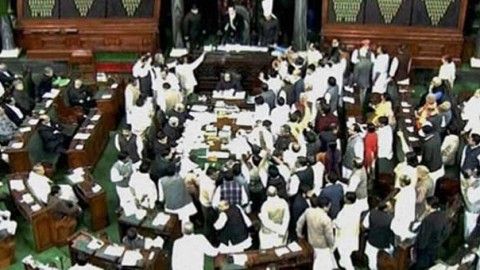Joan Robinson once proposed that one reason why economic theories tend to have a very long life is the mere intellectual inertia that the discipline suffers from. However, the discipline today stands at a crucial juncture-where its centrality to all arenas means that the greater the inertial tendencies and the inability to maneuver clear through a perennially open Pandora’s Box, the greater the costs and the harsher the public drubbing. Couple this reality with the absolutely unprecedented and exceptional state of affairs, and you would know why Janet Yellen is losing her sleep.
So how does one take an overview of the circumstances contemporary monetary policy in the West in general, and in America in particular, finds itself placed in?
Financial misadventure and innovation bordering on excess together with excessive, rather predatory, lending culminated with the Global Financial Crisis (GFC) of 2008. The same development played a major part in bringing about the European sovereign debt crisis of 2011. In both cases, the limits of conventional monetary policy got demonstrated. Interest rates were pulled to the zero bound and yet, inflation refused to set in. This led the Federal Reserve back in 2008 and the European Central Bank in 2015 to resort to aggressive bond buying, expecting that the subsequent liquidity infusion would lead employment and inflation to pick up. While Europe bungled up with premature monetary contraction, and is now arguably into a liquidity trap, the US economy added more jobs and prevented the onset of deflation.
The success of the US economy in averting deflation is attributed to this unconventional policy of ‘Quantitative Easing’ with a heavily deregulated credit market. Too loose monetary policy however, often leads to debt buildup and asset price bubbles, setting the stage for the very bust that the policy was instituted to counter. Also, the business cycle implies the inevitable onset of boom after recovery and recession after boom, and the maintenance of near zero interest rates negates any headroom for monetary easing in the event that such a crisis is seen developing. Thus, a contractionary cycle had to be initiated and after great consideration the first 25 bpts rate hike was announced on the 16th of December the previous year. Since the circumstances and policies as described above were indeed unprecedented, the monetary tightening that seeks to regulate such an exceptionallyunder-regulated market is also going to be unprecedented. Further, as the Fed embarks on a contractionary cycle, the ECB has embarked on an even more proactive QE and negative interest rates, meaning that this divergence in monetary policy on either side of the Atlantic is adding to the uncertainty surrounding the circumstances.
There is though, a substantial case to observe gradualism in monetary contraction.
Firstly, as the table presented below clearly suggests, US appears to be the tamest that it has been since the 1970s. Thus, while then, the economy was characterized by supply constraint, now; it is the demand constraint that inhibits growth. Current inflation falls safely below the Fed medium term threshold of 2%.
A point to be noted here is that this trend of low inflation, demand constraint and overcapacity is seen to characterize most major economies in the present day. The IMF’s World Economic Outlook (April 2015) suggests that the median inflation rate among 23 advanced economies was merely 0.2%.Thus, the principle threat to the global economy is deflationary in nature than inflationary.
YEAR CPI
|
Secondly, the principle reason being put forth by the hawkish lobby for quick contraction is the possibility of overheating in the labor market. The unemployment rate, to be sure, has indeed fallen to 5% and in January also went as low as 4.9%. However, the nature and quality of employment requires to be considered while investing trust in these figures. Deducting the number of those employed part-time but looking for full-time employment, the rate of unemployment appears larger than this figure. Aggressive monetary tightening is likely to reverse the trend of employment growth, keeping several such workers underemployed. Similarly, any growth in real wages follows a considerable decline in wages post-crisis and hence should not be considered a sign of considerable impending tightening in the labor market. Further, wage price spirals are typically powered by low unemployment and inflationary expectations. The latter are likely to remain subdued for several reasons such as a strong dollar, expectations adapting to subdued price rise, etc. For the former, a 5.1% rate of unemployment has been described theoretically as the rate of unemployment at below which inflation begins to accelerate. This is the ‘Non Accelerating Inflation Rate of Unemployment’ (NAIRU) for the US economy.Rohit Azad and Anupam Das argue (Has Globalization Flattened the Philips Curve?, EPW, vol.2, 2015) that the Minimum level of unemployment below which inflation shows an increase seems to have fallen as increasing globalization has linked wage growth in advanced countries to wage growth in peripheral countries, weakening the bargaining position of workers in the richer countries who tend to fear job flight. With specific reference to the US economy, the increase in monopoly power which determines the bargaining position of capitalists is apparent in the fall in trade unionization in the US from 25% in the 1970s (when inflationary pressures shot to threatening levels) to 7% in the late 2000s. This implies that more benefits are reaped by the capitalist class who consume less thus leading us to larger questions of theoretical importance that are better discussed sometime else. All in all, the US economy can endure a lower unemployment rate, without considerable threat from the wage-price spiral.
Third, the US dollar is strengthening relative to most international currencies, and the euro, yen and yuan are likely to further depreciate relative to the dollar. While this will have a deflationary impact, that impact is likely to be restricted to few quarters (‘The Fed’s Dollar Distraction’, Gita Gopinath, Project Syndicate).
Fourth is the state of international oil and commodity prices which have been on a downward spiral for a while now. These factors do clearly have a deflationary impact on the economy. Actually, the core inflation target of 2% is arrived at after deducting food and fuel from the basket of goods mapped as the prices of these factors are volatile. Hence, inflation including food and fuel is expected to equal in the medium term the core inflation. However, the fall in fuel prices this turn is steep, almost 50%, and no volatility can probably carry it back the level that prices were at 2-3 years back. Thus the deflationary impact of fuel prices is considerable and lasting in nature.
Last, we refer to J Bradford DeLong who presents a ‘Cautionary History of US Monetary Tightening’ (Project Syndicate). DeLong shows how four distinct attempts at monetary tightening since the 1970s have typically caused unanticipated losses to the economy and hence suggests gradualism by relying on precedent.
The US Fed must thus show patience in its tightening effort, lest the recovery be interrupted. One reason why the December 16th rate hike did not cause the kind of financial volatility as during say, the 2013 ‘taper tantrums’, was effective monetary communication and a lot of forward guidance that lead the hike to become well predicted. Such slow, steady and instructive signaling will greatly contribute to completing successfully this contractionary cycle.
Looking at the longer run, financial stability will have to be formalized on the Fed’s map as an important metric, apart from inflation targeting, in framing monetary policy. Robust and clever regulatory systems are required to curtail excessive financial innovation. In case of financial stability, leaning against the wind of asset price bubbles is certainly necessary, as cleaning involves a very tedious set of problems, as the post-2008 recovery has shown. Similarly, recessions that follow financial collapses are often more harmful to economies than those that occur as part of the cycle in the real economy. Macroeconomic stability and financial stability must, hence, coexist. It follows that this is likely topresent a range of dilemmas in balancing inflation targeting in the real economy and instability in the financial sector, which regulators around the world would have to deal with.
Tags: economics finance Monetary Policy US finance








